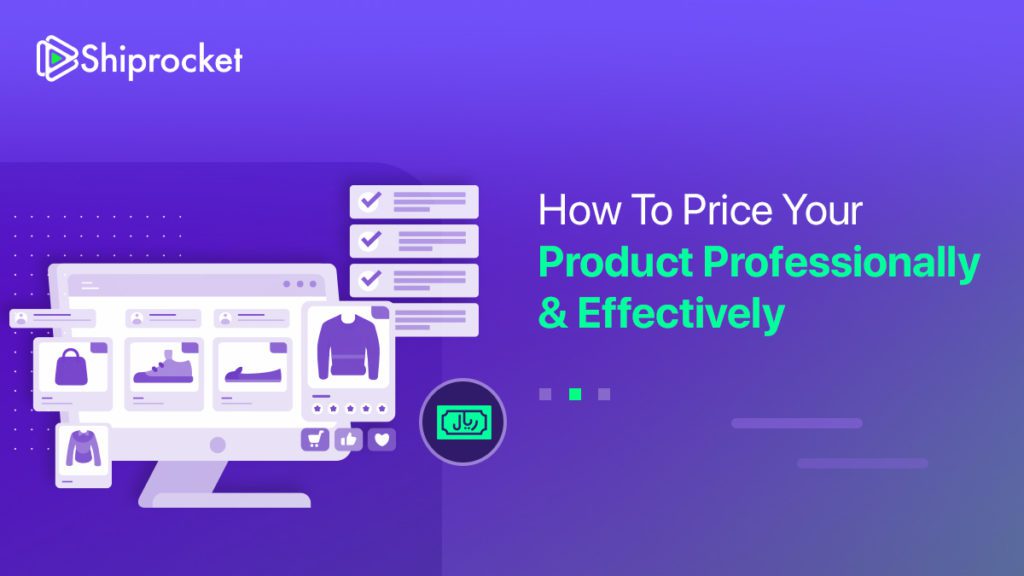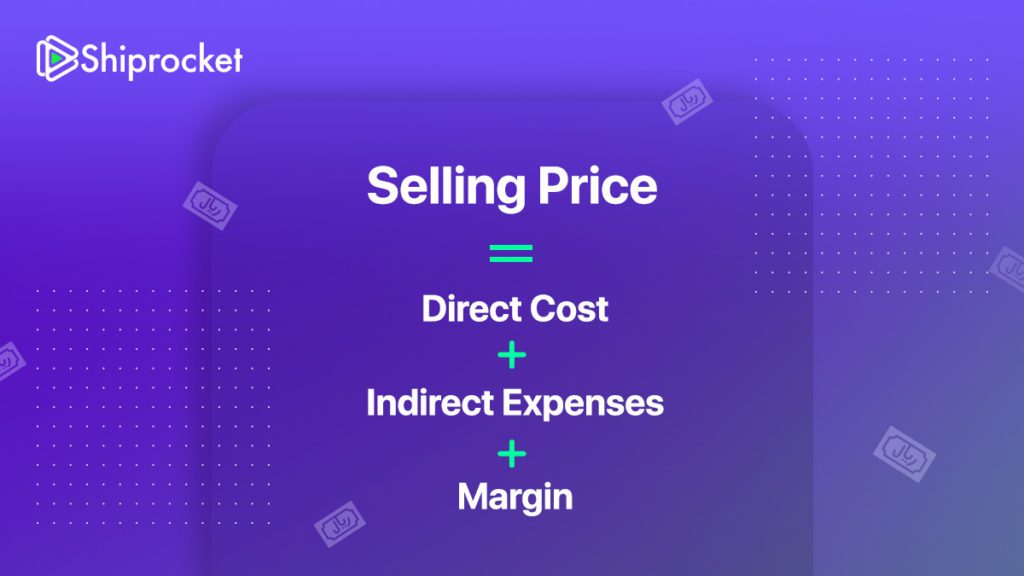eCommerce eCommerce 7 min read
Pricing Your Product Professionally & Effectively
🕒 July 30, 2022 by Reham Omar - 7 min read
Product pricing strategy is both an art and a science; the art is all about choosing a pricing strategy to determine a price acceptable to customers. The science is about optimising the price structure based on various factors to earn profits.

Pricing your products is one of the critical strategic decisions in business as it impacts your business model. Pricing decisions influence everything from profit to cash flow, expense structure, product development, and marketing. This is true for all businesses, including e-commerce and online businesses.
Don’t assume that pricing is a one-time challenge; rather, it is an ongoing process, depending on the product type and stage of its lifecycle. Pricing the product you are launching is more challenging, given the lack of previously available data. If a similar product is already available in the market, pricing is comparatively easier, as you can assess price and cost indications and data from the market. However, if a product is launched for the first time, you have no option other than entirely depending on the estimated product cost and required margin.
As pricing is an ongoing process, you must perpetually work on a pricing strategy to sustain, grow, and scale your business in a competitive and volatile market. Strategies that need to be employed include pricing to suit every situation and stage of your business. Businesses practice various product pricing strategies; hence, let us discuss a few popular approaches and techniques.
Pricing Strategies & Approaches – Good & Bad Effects
First, you must clearly understand which pricing models will work best for your product and how to achieve the optimum benefits. You need to weigh multiple factors before implementing your pricing strategy to reap benefits while not adversely affecting your business. While pricing below cost can affect profitability and create a perception of low quality, high prices can dissuade customers and affect business growth. The good and bad effects of pricing are also discussed under each pricing approach listed below.
Cost-based
This is arguably the most popular and straightforward method to price a product. Even if you don’t ultimately price your product based purely on the cost plus margin method, you must be aware of the cost structure and the probable margin of the product. This is critical as it gives you an insight into the profit or loss you could have made if you had adopted any other pricing approach, such as market-oriented pricing.
Cost-based prices are estimated by totaling all the costs incurred to make or buy and deliver your product to the customer, then topping up a mark-up to reach the final price. The following costs, among others, typically make up the total cost of a manufactured product:
- Variable costs, including material costs
- Direct labour costs
- Other direct costs such as packaging, insurance, and shipping costs
- Selling, marketing expenses, discounts, and promotion
- Fixed expenses
- Total costs
If you have already decided on the margin you need to get on each product to achieve the expected ROI, you can add the proportionate margin or mark-up to the total cost to derive the selling price: Direct Cost + Indirect Expenses + Margin = Selling Price. You will find many financial techniques that can be used to calculate the required ROI, allocate fixed overheads to each product, decide whether the pricing is to be based on the total cost or marginal cost, understand the impact of profit/volume on pricing, and choose between make-or-buy options, among other deciding factors.

Whichever pricing approach you choose, cost-based pricing is unavoidable, even as you consider other pricing strategies to ensure.
Market-oriented
Also known as market-based or competition-based pricing, this method compares the prices of competitive products in the market. The strategy is to set the price at the same, above, or below the competitor’s price depending on the value and quality match between the two. While pricing above market price helps brand your products as being of higher quality, the copy market price allows you to sell more and maximize profit. Setting the price below the market helps lure customers into buying your products. You must be careful while copying the market price or setting it below the market price, as you may lose money if such prices fall below the total cost of your product.
Dynamic pricing
Also referred to as demand pricing, dynamic pricing is a pricing strategy wherein you revise prices in sync with the current demand in the market. In other words, dynamic pricing is the process of making price changes multiple times, even during one single day, to match the price to the buying power of customers of varying profiles. Some real-life examples of dynamic pricing are how ridesharing services such as Uber and Ola raise fares when the demand for rides surges or when Amazon increases the prices of their high-demand products on popular online shopping days such as Black Friday.
Maximize profits while increasing market share
An essential economic theory you must understand is price elasticity – a measurement of change in demand in relation to the product’s price change. If the demand for your product changes substantially in response to its price change, it is the effect of price elasticity. The price changes depending on the shift in demand and vice versa. You will find different prices at various levels of demand.
The demand changes may result in multiple price levels; the best price, the next best, and so on, at different demand levels. You must be careful not to select only the best price, disregarding the prices close to the best. This will cause you to lose the opportunity to increase sales volume and total profit. Let us review three popular pricing strategies to help you lower prices while remaining profitable.
Discount pricing
This strategy allows you to sell to more customers without losing money. The standard practice is to mark up higher prices and offer products at prices that appear as reduced to the customer. This strategy allows you to attract customers who may not have purchased earlier, as well as to upsell or cross-sell other products without losing money on the discount-priced product.
Loss-leader pricing
It appears the same as discount pricing, but it is a pricing strategy that assumes that if you sell some products below cost, customers will also buy other products with a high-profit margin, thus making up for the loss on loss-leader products.
Anchor pricing
This pricing method shows the product’s lower sale price and standard price. This strategy makes customers believe that they are buying your product at a lower price than its regular price.

Long-Term Pricing Strategy
You must keep tracking and analysing market dynamics, changes in cost structure, and business and operational metrics to ensure long-term profitability.
- You must capture and analyze the cost structure, particularly overheads, to ensure that various cost elements are under control and are recovered from your selling price.
- To optimize price level and profit in different conditions and stages. This involves experimenting with pricing strategies, including raising prices on best-selling products, using seasonal discounts and promotions, and copying competitors without disregarding the cost structure of your product.
Bottom Line
You must set policies and processes related to dynamic and flexible prices – those that change with the market and allow your business to remain profitable under all circumstances to gain a competitive edge in the marketplace.




